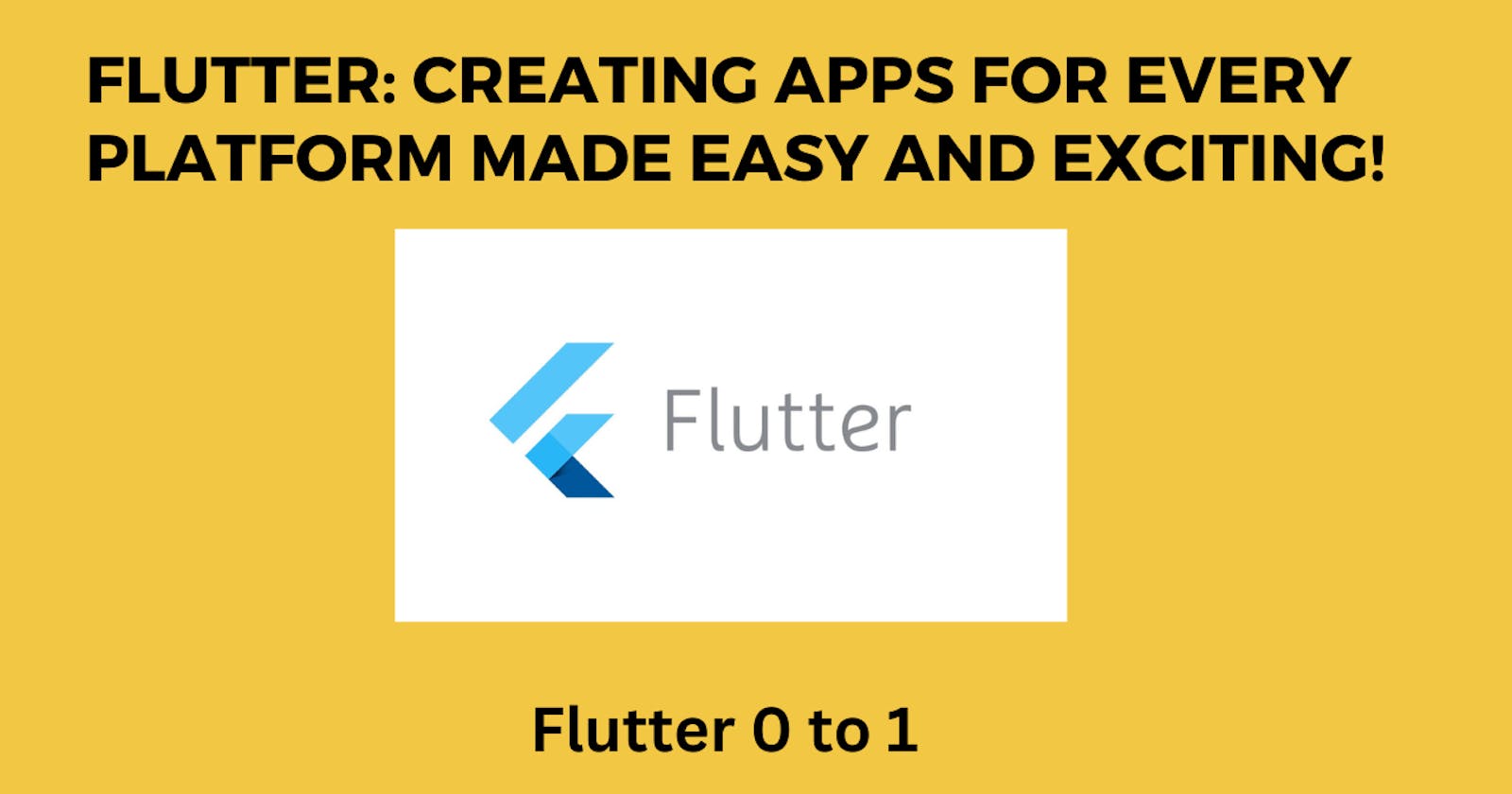Introduction
In today's digital era, mobile applications have become an integral part of our lives. Whether we need to connect with friends, manage our finances, or simply play games, mobile apps have us covered. But have you ever wondered how these apps are built? Well, one powerful tool that has revolutionized app development is Flutter! In this blog, we'll take a deep dive into what Flutter is and explore its various uses.
What is Flutter?
Flutter is an open-source software development kit (SDK) developed by Google. It is designed to create high-quality, natively compiled applications for mobile, web, and desktop platforms from a single codebase. In simple terms, Flutter allows developers to write code once and deploy it on multiple platforms, saving time and effort.
The Beauty of Flutter's User Interface
One of the remarkable features of Flutter is its beautiful and flexible user interface. Flutter uses a unique approach called "widget" to build user interfaces. A widget is a reusable component that represents part of the user interface. Flutter provides an extensive collection of pre-built widgets, making it easy for developers to create stunning and responsive UI designs.
Hot Reload: The Developer's Best Friend
Developers often face the challenge of testing and iterating their code quickly. Flutter comes to the rescue with its "hot reload" feature. Hot reload allows developers to make changes to their code and instantly see the results in the app, without losing the app's state. It significantly speeds up the development process, enabling developers to experiment and fine-tune their apps efficiently.
Cross-Platform Development Made Easy
Gone are the days when developers had to write separate codebases for Android and iOS apps. Flutter enables cross-platform development, meaning you can create apps for both Android and iOS using the same codebase. This saves a tremendous amount of time and effort for developers, as they no longer need to learn different programming languages or frameworks for each platform.
A Growing Ecosystem
Flutter has gained massive popularity since its release, leading to a vibrant and rapidly growing ecosystem. The Flutter community is highly active, contributing plugins, packages, and widgets that extend the functionality of Flutter. This extensive ecosystem empowers developers with a wide range of tools and resources, making app development even more enjoyable and efficient.
Diverse Applications of Flutter
Now that we understand the basics of Flutter, let's explore its various applications:
Mobile App Development: Flutter is primarily used for developing mobile applications. Whether it's building a social media app, an e-commerce platform, or a news aggregator, Flutter provides the necessary tools to create high-performance, visually appealing, and responsive mobile apps.
Web Development: Flutter isn't limited to mobile apps alone. With Flutter for Web, developers can leverage the same codebase to build beautiful and interactive web applications. This cross-platform capability simplifies the web development process and enables seamless user experiences across different devices.
Desktop App Development: Flutter's versatility extends to desktop platforms as well. With the Flutter desktop embedding project, developers can build native desktop applications for Windows, macOS, and Linux. This widens the reach of Flutter and allows developers to target a broader audience.
Embracing the Flutter Revolution
As Flutter continues to evolve and improve, it has become a go-to choice for developers worldwide. Its combination of ease of use, efficient performance, and cross-platform capabilities has made it a game-changer in the world of app development. Whether
